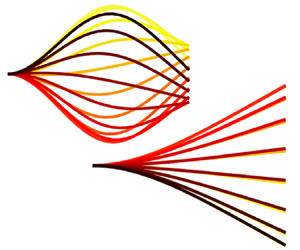Published online by Cambridge University Press: 08 August 2023

We investigate the dynamics and energy production capability of a flexible piezoelectric plate submerged close to the free surface and exposed to incident head gravity waves and current. A theoretical model is derived in which the flag and its wake are represented with a vortex line while the body of the fluid is considered to be inviscid. The model is employed to describe the hydrodynamic interactions between a flexible plate, its wake, gravity incident waves and the current. The model reveals two distinct vibration states of a piezoelectric device corresponding to almost similar optimal energy production levels. The first is associated with the cantilever fluttering mode of the plate, with limited dependency on the plate's flexibility across different Froude numbers and incoming wave frequencies. The other resembles the flow-induced flapping mode in more flexible plates, with the energy output showing a higher dependency on plate flexibility. The concurrent existence of these two energetic modes allows adjustment of the plate length to consistently achieve the maximum energy production level across different flow conditions. The role of the Froude number of the system's responses is explored and correlated to the appearance of gravity wave groups on the surface, each propagating with a different wavenumber. It is shown that a submergence depth of less than half of the body length is required to reach a high energetic condition in subcritical and critical flows. Finally, the optimal inductive and resistive values are related to proper matching between flow, mechanical and electrical time scales.